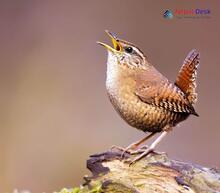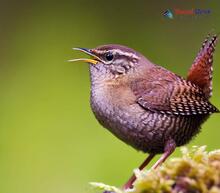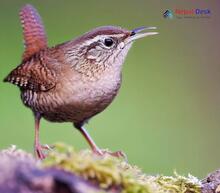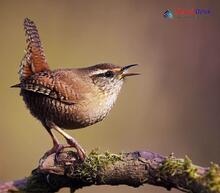The Troglodytes genus is an absolutely enthralling group of birds, boasting unique features and a spellbinding evolutionary journey. These tiny but nimble creatures, belonging to the wren family, have piqued the interest of both scientists and bird lovers the world over. In this article, we'll take you on an adventure into the origins, taxonomy, and systematics of the Troglodytes genus, while also delving into their evolutionary progression, genetic phylogeny, detailed species list, distinct characteristics, and presence in Nepal.
Systematics, Evolution Chain and Genetic Phylogeny
Belonging to the Troglodytidae family, the Troglodytes genus is fondly known as true wrens. These petite passerine birds hail from the Americas and Eurasia. Interestingly enough, the term 'Troglodytes' has its roots in Greek, translating to "cave-dweller," which refers to their preference for nesting in cavities or crevices.
With an evolutionary history spanning millions of years, genetic research and fossil findings have helped us understand how the Troglodytes genus evolved over time. Although the exact number of ancestral species remains a subject of contention among experts, the extraordinary diversity of true wrens bears witness to their incredible ability to adapt and flourish in various habitats.
Thanks to modern genetic techniques, we now have a better understanding of the phylogenetic relationships between different species within the Troglodytes genus. By analyzing DNA samples from both living and extinct species, researchers can delve deeper into how these birds' evolution unfolded and their relationship with other bird families.
Species List and Characteristics
The Troglodytes genus comprises several species found throughout different continents. Some prominent members include:
- Troglodytes troglodytes (Eurasian Wren) - Found throughout Europe, Asia, and North Africa.
- Troglodytes aedon (House Wren) - Native to the Americas, ranging from southern Canada to southern Argentina.
- Troglodytes hiemalis (Winter Wren) - Found in North America, primarily in Canada and the northern United States.
- Troglodytes monticola (Mountain Wren) - Inhabiting the Andean highlands of South America.
As regards to their characteristics, members of the Troglodytes genus all share various traits:
- Size: Small-sized birds, usually measuring between 3-5 inches in length.
- Plumage: Typically brown with darker markings and understated patterns.
- Tail: Short and often held upright, a characteristic feature.
- Song: Complex series of notes form their melodious songs, another distinctive quality.
- Nesting: Built from sticks, grasses, and other materials; nests are usually found in crevices or cavities.
Presence in Nepal
In Nepal, you'll most likely encounter the Eurasian Wren (Troglodytes troglodytes) species. They can be found thriving in an array of habitats such as forests, shrublands, and even gardens close to human settlements. Their distribution in Nepal serves as a testament to their adaptability and resiliency amid diverse environmental conditions.
In conclusion, the Troglodytes genus is a mesmerizing group of birds with a remarkable evolutionary past and captivating characteristics. Further study of these delightful creatures promises to reveal new insights into their development and survival techniques. For bird enthusiasts and nature lovers alike, spotting one of these charming wrens serves as a beautiful reminder of the wonders that nature's incredible diversity has to offer.




